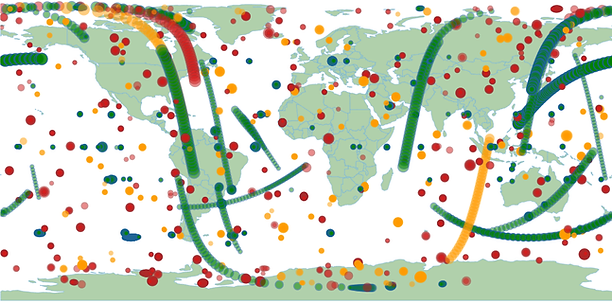EYES ON THE SKY

The Problem
There are more than 500,000 objects floating in space. Only about 2,000 of them are functioning. With little regulation and monitoring, the problem of space junk is growing exponentially.
Just like your city streets, there are dedicated "highways" in space. Most of the time, objects remain on their path. But when a space object stops working, it drifts aimlessly into the cosmos. Rogue bits of metal and space debris pose a danger to the technologies we rely on and to the future of space exploration. We need an accountability program.
Without monitoring and legislation, the cosmic junkyard will continue to grow. Near-earth space is outside conventional environmental protection standards. And yet as a finite resource, our space-traffic footprint is an important but underexplored sustainability metric.
Junk. Space junk. Clean it up.
You're at home watching your favorite cable show. The storyline is approaching its climax. Then - CRASH - nothing! Thanks, space junk. When satellites stop working, your cable goes out, Siri can't give you directions and you can't post that latest photo to instagram. Now imagine those impacts at an interplanetary level. You're on board your space ship, rocketing to the Red Planet. You've successfully made the perilous launch and exited the earth's atmosphere, only to be pinged by a small piece of metal the size of a phone. It collides with your rocket. In an instant, you, your team, and the billions of dollars that helped get you there burn up. So who's responsible for this chaos in space? We all are. Eyes on the Sky seeks to develop a sustainability development goal to catalyze environmental protections in near-earth space and maintain balance across the earth, sea, and sky.
We must ensure companies don’t act in their self-interest at the expense of future generations.

Explore real-time low Earth orbit space debris data with miss distances less than 10km.
Click here to explore:
http://astriacss03.tacc.utexas.edu/ui/min.html
What is our solution?